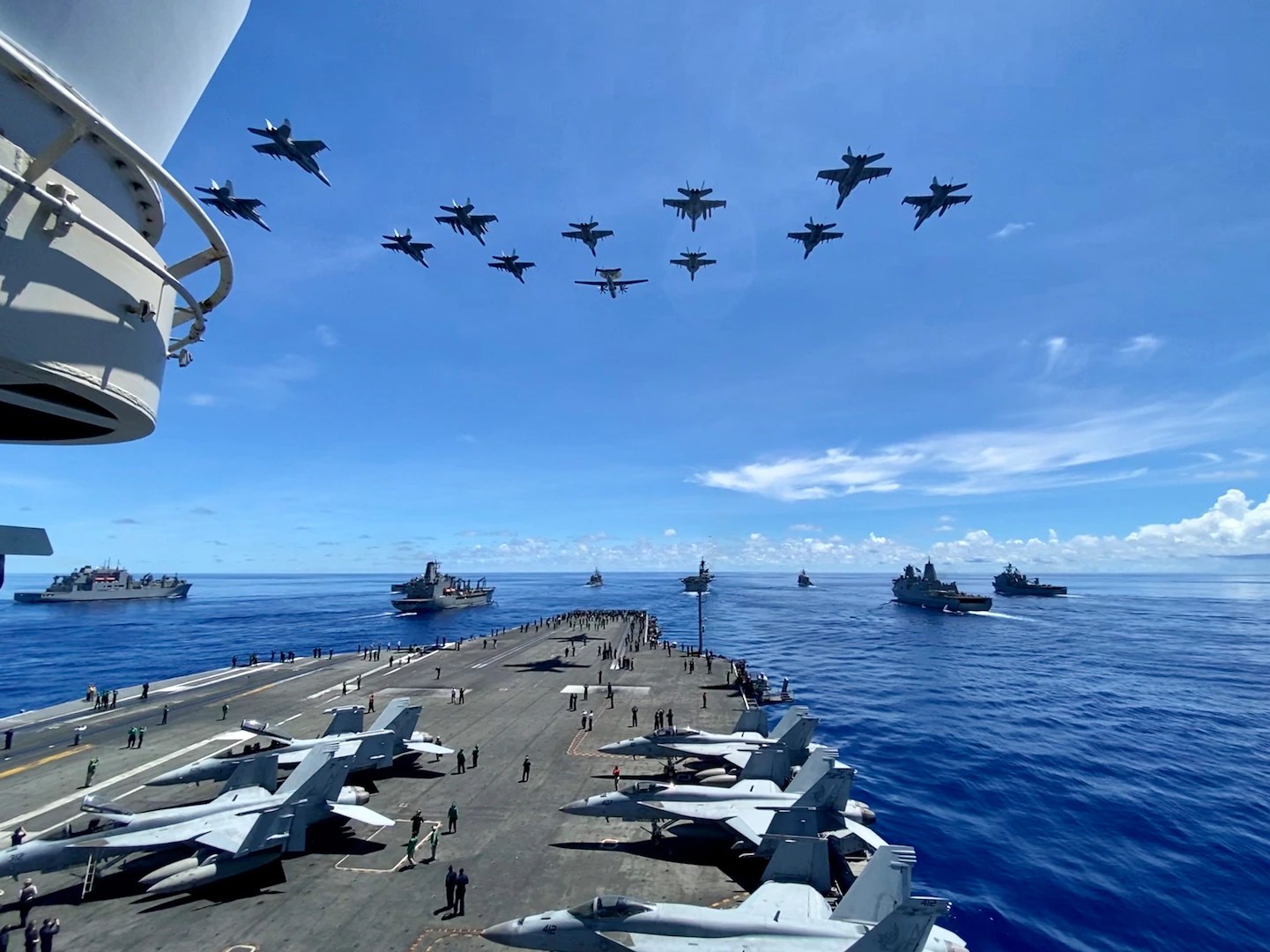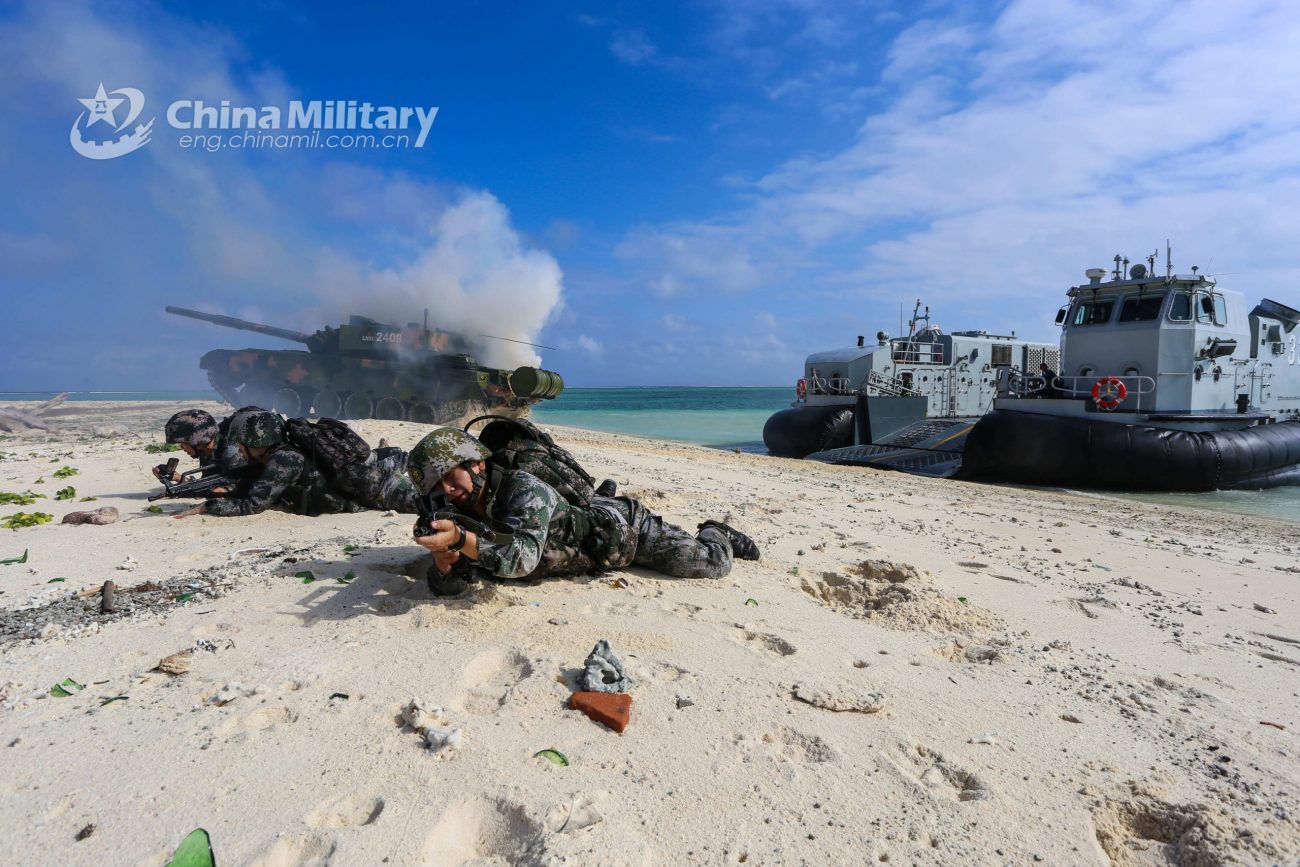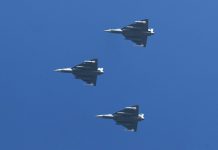Amid the possible conflict between the US and China’s People’s Liberation Army (PLA), the Indo-Pacific Command (INDOPACOM) has asked for its most massive funding in the US defense budget this year – over $15 billion.
US F-22 Raptors ‘Roar’ In The Philippines For The Very First Time As Pact To Access Military Bases Inches Closer
The Hawaii-based command wants to build defenses to protect Guam, procure sea-based long-range standoff weapons and anti-ship missiles, construct bases and installations in Australia, Oceania, and the Mariana Islands, and procure new air and missile defense sensors.
The command hopes to acquire these capabilities before 2027, the date set by the Communist Party of China (CPC) and President Xi Jinping, to prepare for a potential invasion of Taiwan.
The deadline also coincides with the founding of the People’s Liberation Army (PLA).
INDOPACOM’s assessment that Foreign Policy obtained warned about China’s “whole-of-government assault against the rules-based international order and the strategic competition with the US encompassing all domains to include efforts to coerce our strongest allies.”
Xi Jinping recently made the usual appeal to have a “world-class” military, which coincides with its consistent progress to be independent of foreign semiconductors and chips. This capability will directly impact its military technology in quality and resistance to foreign technology and trade sanctions.

The INDOPACOM’s request is on top of the Biden administration’s $840 billion defense budget, the most significant spending in US history.
It is, however, unlikely to meet the immediate infrastructural and equipment needs of the combatant commands and is instead oriented toward long-term modernization.
What Does The $15 Billion Include
The INDOPACOM wants billions in munitions and weapons procurement, including advanced air and cyber defenses. This was after a few wargames that predicted how the US could run out of long-range precision-guided munitions within a week in a war over Taiwan.
This includes $1.6 billion in boosting missile defenses in Guam to counter China’s medium-range missiles than can strike the island. The US wants to field the Aegis Ashore system and the US Army’s Integrated Air and Missile Defense program.
Another $5.3 billion is required to track missiles, including overhead persistent infrared radar to cover the Arctic, missile warning tracking in low-earth orbit, and more than $1 billion to build a space-based sensor layer.
The INDOPACOM is asking for nearly $266 million for more Tomahawk land-attack missiles; $395 million to develop a longer-range version of the system; more missiles for the F-35A used by the US Air Force; more than $350 million for anti-submarine torpedoes; and nearly $315 million for new sea mines.
“Congress did not appropriate money last year to build more long-range anti-ship missiles, a potentially key capability to deter a cross-Taiwan Strait invasion, despite a handshake deal between Raytheon and the US government to build more,” the Foreign Policy report added.
Construction upgrades to its Indo-Pacific bases are another major thrust for INDOPACOM, with nearly $2 billion needed. This includes parking for bombers and fighter jets at Tindal and Darwin air force bases in Australia; developing an airfield at Tinian in the Marianas; a submarine pier and satellite communications in Guam; more parking for aircraft at Andersen Air Force Base on the island; and more boat ramps and storage on Tinian, the Micronesian island of Yap, and Palau.
The Trump administration, too, had sought to expand facilities at Palau.

Will It Help
When acquired, the new capabilities put the US in a better position than before the Chinese in the Western Pacific. But the acquisitions are more about the timing than what they can do since governmental functioning and bureaucracy are usually fraught with either red tape or competing interests in a democracy.
China, whose military-technical progress has been observed to be taking place in months, will either choose to attack before the US military fully acquires these capabilities or will have progressed exponentially by the time these materialize.
Either way, the broad overall advantage is still skewed in the Chinese favor, and the new US missiles and bases might only increase Chinese losses or make their attack on Taiwan more difficult.
But it is difficult to imagine that these might ultimately push back a PLA attack. The INDOPACOM’s language in the report for the US Congress itself names “deterrence” as the primary goal and does not indicate it ever envisages going on the offensive.
So militarily, the US is realistic about what it can do in the western Pacific.
But politically, it still has a fundamental misreading of the Chinese intentions on Taiwan, which it still thinks can be “deterred.” To deter an enemy in warfare, they need to have a goal they are willing to compromise. If the enemy sees their goal as important and necessary, they will not be deterred.
However, they can be deterred if the goal is not critical or is something they can be flexible about. But in Chinese politics, Taiwan is deeply connected to its society and collective national identity.
Thus China perceives a clear existential threat to the mainland if the island eventually does not become part of China since that opens the way for foreign powers like the US and Japan to attack it, as had happened a few decades before the Second World War.
The current generation of US strategists misses that greater American and Taiwanese military advancement will not deter but rather harden Chinese motivations for a military recourse and make the need for an attack on Taiwan even more urgent.
- The author can be reached at satamp@gmail.com
- Follow EurAsian Times on Google News




